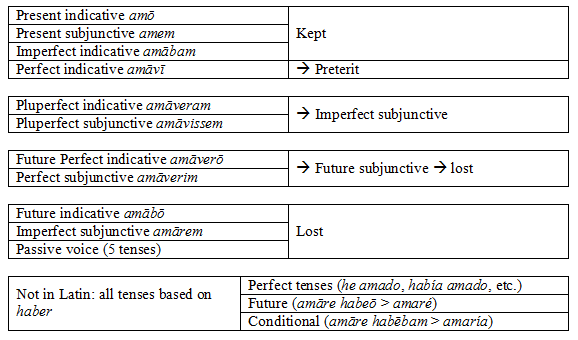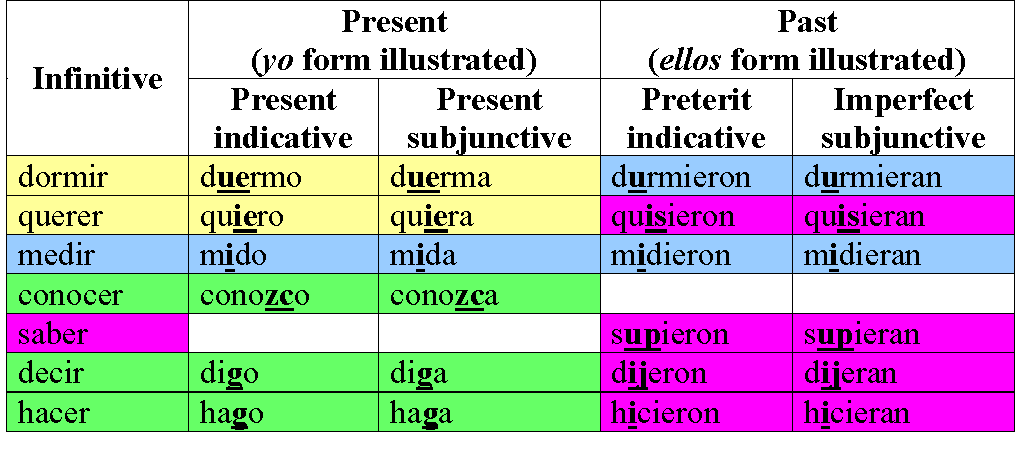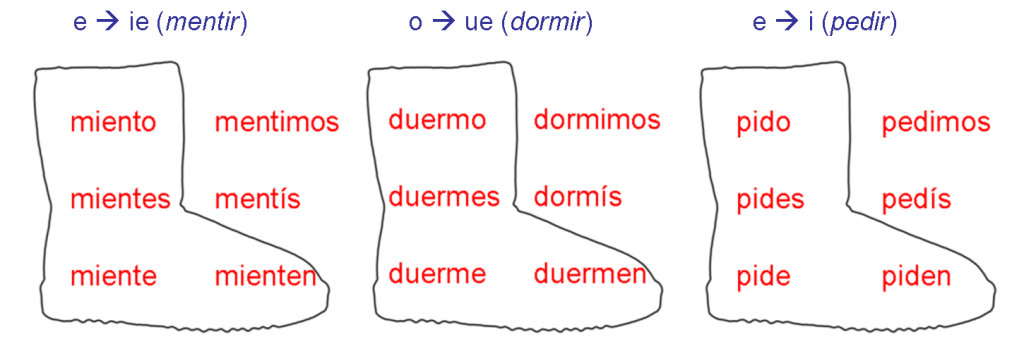Spanish students spend a lot of time learning and practicing differences that exist in Spanish but not English. These include differences in pronouns (tú, usted, and their plurals), verbs (ser and estar, saber and conocer), verb tenses and moods (pretérito/imperfecto, indicativo/subjuntivo), and other aspects of grammar (masc./fem., por/para, ese/aquel). I’ve put together a little slideshow below that summarizes these differences.
Obviously this list could be a lot longer. Pedir/preguntar, mudarse/mover, and hacerse/ponerse are some additional items that spring to mind. The differences I put on the slideshow are the ones that seem to come up most in an introductory Spanish class. I’m particularly fond of doler vs. lastimar because students seem to trip over this one until they realize that the two words represent different aspects of the English concept.
Note: slideshow updated 3 aug 2013, see follow-up post.
The last two slides present the only three differences I’ve been able to think of (or had pointed out to me) that go the other way: that is, important distinctions we make in English but not in Spanish. These differences are “there is” vs. “there are” (both singular in Spanish), “to do” vs. “to make” (both hacer in Spanish), and all the different meanings of su (his, her, your, their).
I’m sure there are many others besides these. Perhaps an ESL teacher could suggest some? I welcome your comments. [Edit: As discussed in this later post, another good example is the Spanish verb esperar, which combines the meanings of English ‘to wait’ and ‘to hope’.]













